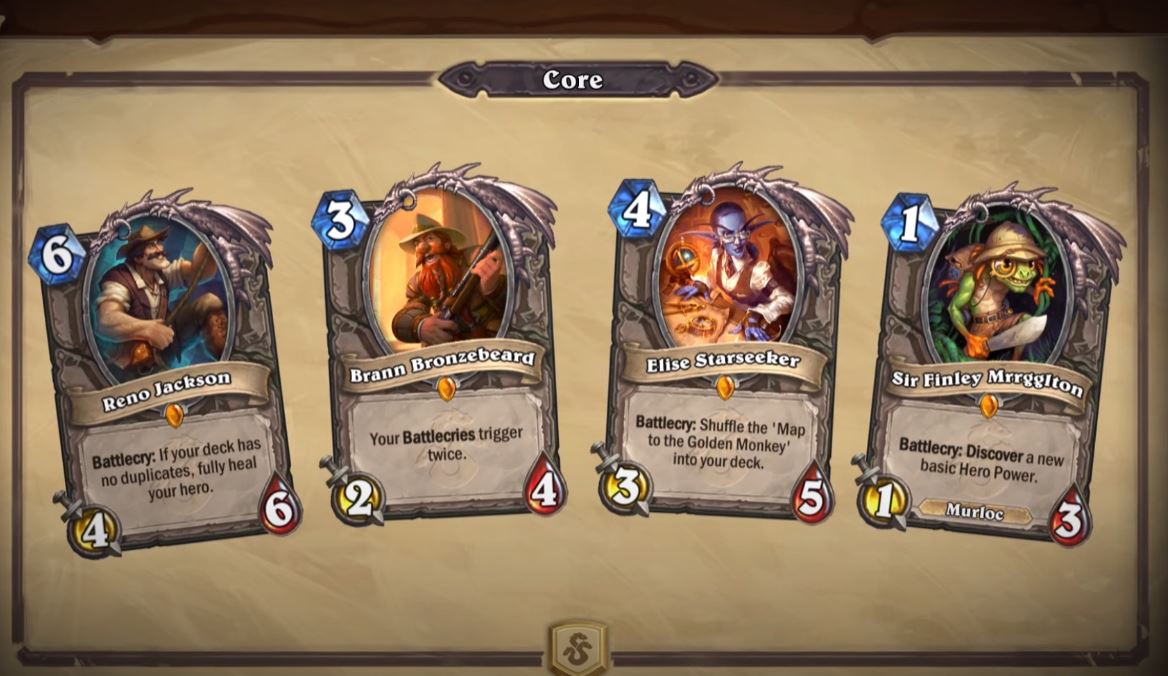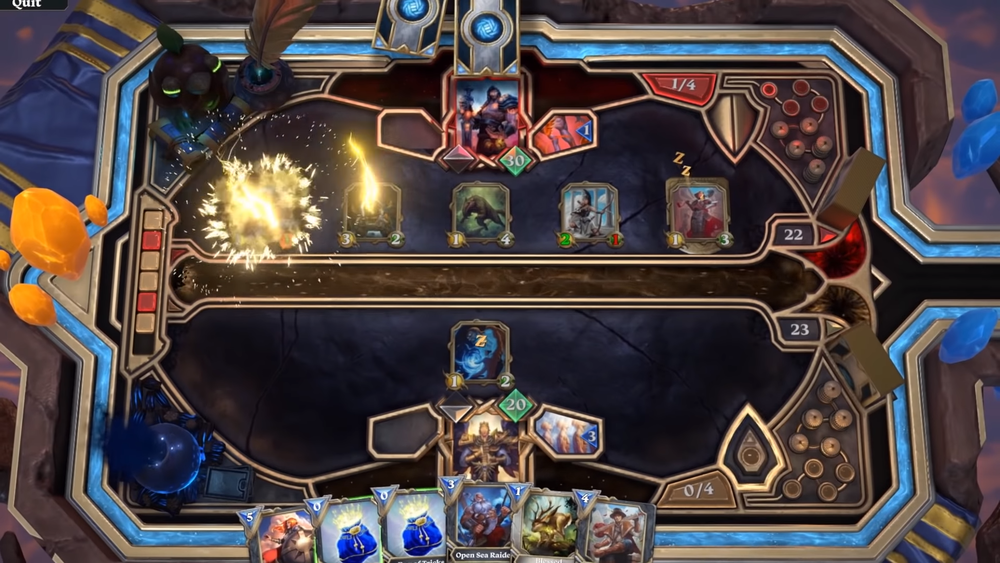Why experts say blockchain is the future of card games
What is the best type of blockchain game? The answer is of course subjective, as it depends on your taste. Do you prefer to test your skills on runner-style games, or would you rather explore a virtual open world? It can be difficult to decide which one really best. That said, one game format has stood out as perhaps the most compelling case for blockchain integration: Card games. Even opponents of NFT games – including journalists who have published massive features attempting to disparage the Web3 gaming industry as a whole – have been forced to admit that NFT card games have real utility.
Do you need proof? One of the first blockchain games to be released on a large scale was sorcery of Genesisa card game that owes much of its mechanics and art style to the Eternal Magic: The Gathering (MTG). Other early players in NFT card games include Estates Unchained and Axie Infinity. Over the years, these titles have been quite successful and gained a dedicated following. But they are far from the only high-profile card games to hit the market. It is Sorare, Splinterlands, and Origins of Metropolis – to mention a few.
But what exactly makes the card game format so perfect for blockchain integration? We talked to card game experts about Estates Unchained team to find out.
Can’t collect them all
Over the years, the rush to collect new and rare items has proven to be one of the most reliable ways for game developers to encourage player retention and growth.. MTG: Arena, for example, has nine major releases on its calendar for 2023, including those that tease new game mechanics and add to the game’s story. In the last 30 days alone, the number of average monthly players on the platform has increased by more than 100,000.
The problem? One of the best parts of collecting trading cards is in the name: trading. But in Web2 digital card game offerings, which Hearthstone or MTG: Arena, players cannot trade (or even sell) cards. Much of this was a deliberate choice by the game developers, as they wanted to encourage players to purchase booster packs from their in-game marketplaces to increase their profits.

While some players don’t mind the inability to switch cards, others see it as a turnoff, as it limits the types of decks they can put together. Instead of customizing their deck to be exactly what they want, they are forced to buy booster packs repeatedly in hopes that they will score “the one card” that will complete their planned deck.
Estates UnchainedExecutive producer Daniel Paez is uniquely positioned to understand this disadvantage, as he began his career at Blizzard and was part of Hearthstone team. He explains that this inability to choose cards on your own is one of the major shortcomings of Web2 card games — a shortcoming that can be solved with the blockchain.
“The quest to try and get certain cards you really want for your collection is daunting in itself, isn’t it? Trading card games in Web2 don’t reinforce that, and in Web3 it’s one of the most basic decisions you can make,” explained Paez in an interview with nft now. “There is demand from players who [want specific cards.] They have their money. They have time to play, but they actually want that specific card. “I think that’s where you need to really empower the players to be able to act,” he said.
How Web3 is changing the (card) game
But how does blockchain technology empower players of digital card games? By minting digital playing cards as NFTs, each card is freely tradable just like its physical equivalent. If a player is looking for a specific card, they don’t have to rely on booster packs they can only buy from the game’s developer – essentially paid dice rolls to get the cards they want. Instead, they can check which NFT Marketplace cards are hosting the Web3 card game they are playing and buy them directly from another player.
Voilà. Real ownership and real empowerment.
On a larger scale, the entire blockchain gaming industry has shown a strong indication of converging around ownership as its newest center of gravity. Amidst the slow decline seen by games to earn titles through 2022, the industry has rallied around a new term: play-to-own. It’s a deceptively simple concept. Through this model, players can finally claim real ownership over their in-game assets and creations. In the case of virtual worlds such as Decentralized country and The sandbox, ownership is all-encompassing. Everything in these games is up for ownership. Save for other players, of course.

That said, allowing players to own, trade, and collect cards that aren’t bound by the limits imposed by the booster pack-driven model enriches a player’s overall gaming experience. “In fact, there is an inherent joy in curating a collection of unique and rare cards and exploring the opportunity they provide to break the meta and win games,” Chris Clay, Estates Unchained Game Director, explained in an interview with nft now.
Before working with Estates Unchained team, Clay held a director position at another massive Web3 card game: Magic: the Gathering Arena. For him, Web3 provides the logical next step – and potential endpoint – in this corner of the gaming industry. “NFTs are a perfect technology to bring back real card ownership, allowing digital TCGs to come one step closer to their legacy physical counterparts. This puts [the] putting the power back in the players’ hands to curate their collection as they see fit, Clay said.
The future of card-based games?
Certainly, blockchain-enabled trading card games are shaking up this segment of the gaming landscape considerably. They may even create a future paradigm where the main factor for anyone looking to get into a new card game is whether it comes in a digital or physical format.
“The benefits that NFTs also bring to this field, in terms of ownership, will also be appreciated more and more as time goes on.”
Chris Clay
For his part, Clay believes that digital collectibles are likely to win out in the end. “Some players will simply always prefer the physical versions of these types of games…[but] as the demographics shift towards a younger generation, more accustomed to digitally native platforms, it is likely that we will see even more adoption. The benefits that NFTs also bring to this field, in terms of ownership, will also be appreciated more and more over time, he said.
In fact, of all things in Web3, card games may have the best chance of bringing future generations into the next phase of the internet.
However, Clay is quick to point out that Web3 is still in its infancy. Trading card games have served as a largely successful proof-of-concept regarding the new dimensions of gaming and interactivity that blockchain technology can bring to the gaming industry. But there is still so much innovation to be done that many ways to integrate blockchain technology into gaming experiences are yet to be seen. “[Trading card games]by its collectable nature, is a great first place to explore this technology, but it can also be applied to many other genres,” said Clay. And so, while the full future of card games remains unclear, one thing is certain – we will see many more changes on the horizon.


